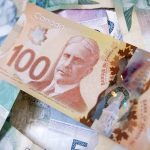Oct 7, 2022
VOT Research Desk
Key News – Insights and Analysis
A slowing in US employment growth to 250,000 in September is what economists anticipate.
In order to change its tight policy and concentrate on jobs, the Fed has to witness hardship.
Only one of five possibilities—a sub-100K increase—would dethrone the dollar.
Each result has a potential transaction attached to it.
In order to see inflation decrease, the Federal Reserve has stated that it is willing to accept economic hardship and even desires it. Financial markets suffered last month, but did employment in the United States also suffer?
The headline change in jobs dominates September’s Nonfarm Payrolls, significantly outweighing wages and other data. We’ll concentrate on the headline and offer five scenarios for how the market might react. First, some context.
Hard recession or easy landing?
The Fed has stopped referring to a soft landing and has also stopped using the R-word, which stands for recession. It only talks about growth that is below average and an increase in the unemployment rate from 3.7% to 4.4%.As a result of fewer workers, spending power is reduced and price pressures are lessened.
The Federal Reserve was previously satisfied with hopes for an improvement in the labor shortage, which had some connection to the “Great Resignation” phenomenon. As supply-chain issues eased, there was also hope that inflation would fall. That also did not occur.
Policymakers have been persuaded that pain is required by Augusts’ extremely strong increase in core inflation, which was 0.6% month-over-month. The labor market has not shown anything that looks like discomfort. For the seventh time in eight months so far this year, the United States outperformed expectations by adding 315 thousand jobs in August.
Modes for Nonfarm Payrolls (PAINLESS – NO GAIN)
In line with expectations: In light of the volatile market conditions right now, it would be reasonable to anticipate a result of 200 to 300 thousand. It would imply a healthy expansion despite slower job growth in the US. The dollar would likely rise, albeit moderately, as investors would likely sell stocks.
As the real judge of the next move, the all-important inflation report due next week would quickly take center stage.
The most straightforward response to such an outcome would probably be USD/JPY.
Unsatisfactory: An increment of 100-200K would currently be huge, showing that the economy is making position at a speed lower than the Covid period. Stocks would rise as investors took a 50 basis point hike in November more seriously and hoped the Fed would slow down its pace of tightening. At the moment, the odds are stacked in favor of a 75 bps increase. The dollar would appreciate.
However, the fundamental trend of lower stock prices and a stronger dollar would resume after a minor shift. Why? A minor drop would be considered a one-time occurrence because inflation significantly slowed in July before rebounding in August.
A move to “sell the rally” on GBP/USD could be a good trade because this currency pair has a lot of volatility and is likely to overreact to a small miss.
Significantly lower than anticipated: The US economy would already be worried by a rise of less than 100K, which would cause the dollar to fall and stocks to soar. It wouldn’t be seen as a one-time occurrence because the effect would probably last longer. It would get worse if the United States reported job losses, but that is highly unlikely.
Investing in AUD/USD or NZD/USD, risk currencies, could pay off. Frequently surge with stock prices.
More than anticipated: A sharp decline in the market and a new leg higher for the dollar would result from an increase of 300-400 thousand jobs. It would demonstrate that the Fed still has work to do and that the steady trend of positive job growth continues.
Selling EUR/USD would appear to be a prudent course of action in the event of such a result, erasing the pair’s recent recovery.
Significantly higher than anticipated: It is impossible to rule out a move of more than 400 thousand positions, which would cause a market sell-off and send the dollar skyrocketing .America added at least 526 thousand jobs in July, and the relatively modest increase in August may have been a one-time event.
Selling AUD/USD or NZD/USD would work in this case, just like in scenario #3, which is the exact opposite of this one.
Epilogue: The Fed’s second mandate is full employment, so labor market pain—inflation is its primary focus—would be significant to markets. Any outcome will have an impact on the stock markets and the dollar, with the odds still stacked against shares and in favor of the greenback.









